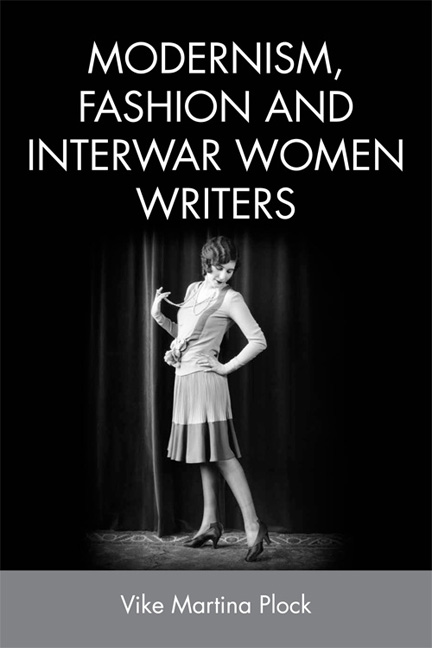2 - Conformity and Idiosyncrasy: Jean Rhys
Published online by Cambridge University Press: 03 January 2018
Summary
Although aspects of this chapter assess, like the previous one, fashion's impact on female identity formation through standardisation and typecasting, its focus is different in that Jean Rhys was, unlike Wharton, not only a consumer but through her work as a fashion model in several Parisian couture houses also a participatory agent in an emerging industry that brought into circulation images of desirable femininity. Surviving photographs of the young Rhys depict a woman who is exceptionally conscious of her good looks, who poses comfortably for the camera and who seems happy to accept the necessity to conform to contemporary beauty standards in exchange for social approval. To claim that she had a critical attitude towards fashion might therefore sound controversial. On the face of it, this young, bohemian woman, who regarded exquisite clothes, fashionable accessories and make-up as constitutive for female identity formation, is positioned – more than any of the other women writers discussed in this study – in a very obvious psychological and professional proximity to the fashionable circuits of her time. Moreover, in terms of her development as a writer, Rhys's willingness to publish her short story cycle The Left Bank (1927) and her first novel Quartet (1928) under the patronage of Ford Madox Ford associated her, right from the beginning of her career, with those literary circles that would eventually become known as the modernist avant-garde. Personally and professionally, Rhys, at the end of the 1920s, seemed to have embodied the image of fashionable femininity and of modernist authorship as it was constructed by contemporaries.
Yet, it is precisely this suggestion – that Rhys's fiction contains a far from subtle critique of the modern fashion industry and its impact on young women who had to earn their living – that I intend to develop in this chapter. Although her writing resonates with images of alluring garments and fashionably dressed women, I will suggest that it also unmasks as prohibitive illusions some of fashion's instructive propositions on how to cultivate images of modern, successful and desirable femininity in the interwar years. On closer scrutiny, it becomes obvious that Rhys's ‘Left Bank’ fiction of the 1920s and 1930s registers the complications and sacrifices involved in living up to the beauty standards devised and disseminated by contemporary fashion lore.
- Type
- Chapter
- Information
- Modernism, Fashion and Interwar Women Writers , pp. 73 - 109Publisher: Edinburgh University PressPrint publication year: 2017



